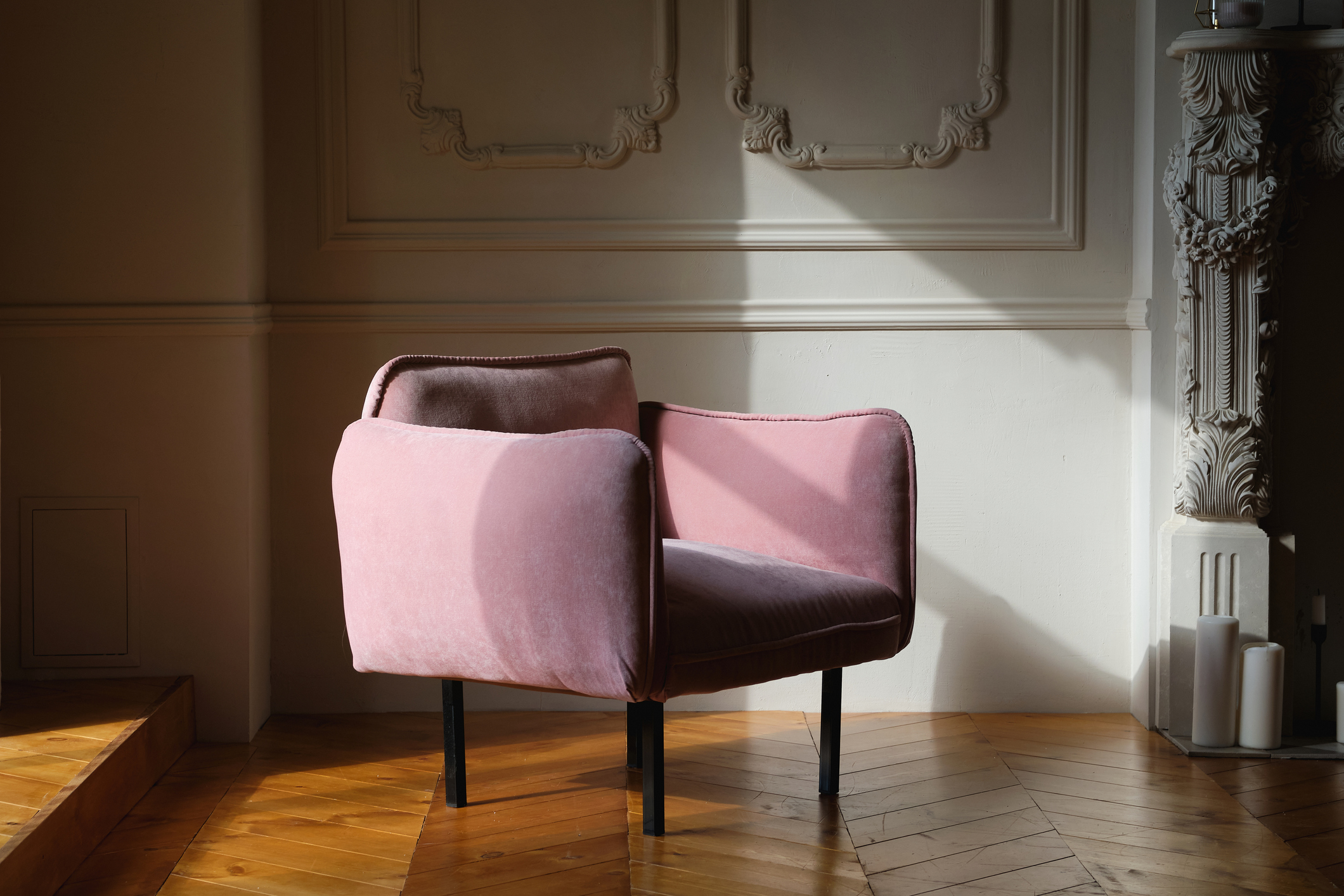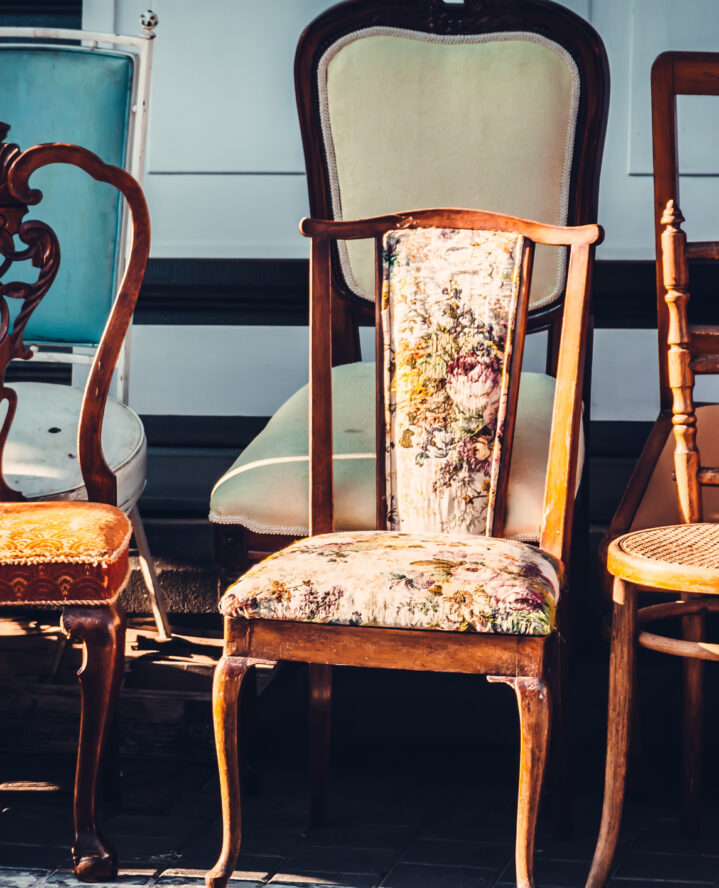A one-of-a-kind moment will always reign supreme over any mass-produced selections. As is the case with thrifting for clothing, shopping secondhand for furniture adds some irreplicable aesthetic complexity to any space. Of course, there is nothing wrong with getting some tried and true basics that have stood the test of time and earned their places as cult faves online. After all, there is a reason why these items go viral in the first place. But in this era of ultra-curation and digital dominance, interior design is experiencing a mass-blandness that has the homes we see online looking like carbon copies of each other rather than representations of the unique tastes and passions of the person living there.
The remedy? One of the best ways to encourage creativity and embrace our differences through interior design is to diversify where the items we fill our homes with come from. If every item you purchase is a result of a viral video or trending post, then it is a no-brainer that these items will likely be in the homes of many others. Becoming a bit more meticulous about where you get your items is the best remedy for the erasure of individuality we’ve been seeing.
A great way to do this? Vintage and secondhand furniture shopping. If you are new to the world of pre-loved goods, the concept may seem a bit overwhelming at first, but with a little strategy, a few good tips, and a sprinkle of luck, vintage decor shopping can quickly become preferable to more traditional methods of furnishing your home. With the help of Eve Jean, an interior designer based in New York, we’ve compiled a list of need-to-knows to help you ascend on your secondhand shopping journey.

Remember estate sales are your friend.
Sites like Facebook marketplace have earned a bit of cultural dominance in the home goods space, but Jean says IRL estate sales are a slept-on way to get one-of-a-kind pieces for your space.
“People don’t really like estate sales,” says Jean, who adds that the hesitancy towards these sales is often misguided, as she has found a fair share of gems during her tenure.
“I literally went to an estate sale with one of my clients, and we purchased a piece of artwork because we just liked it and thought it was beautiful. And then we went to get it framed and come to find out that artwork was worth 1.2 million,” says Jean.
Don’t go alone.
Jean also advises implementing the buddy system to prevent “secondhand goggles” which can make unworthy items seem like genuine steals in the heat of the moment.
“I always tell people to go with someone so you have your person to say, ‘No!’ so you’re not leaving with everything. Because I used to do that, and it’s like, ‘Did I really need that?'”
Take advantage of the weekends.
One of the best things you can do before making any big purchase is to sleep on it. Putting some time and distance between yourself and the item is a great way to make sure you are making a worthwhile purchase and investment.
“Estate sales are always over a weekend. If it’s a piece that you’re really contemplating and it’s a higher ticket item, I always tell my clients go home, think about it. Even if you come back later, you can sometimes leave a deposit just so it’s not sold to anybody else,” says Jean.
However, she says it’s important to remember that these items are one-of-a-kind, so if someone else gets their hands on one, there’s no going back.
“Now, I’m not saying that if you leave it, it’s gonna be there when you come back tomorrow,” says Jean.

Examine structural quality beforehand.
One of the reasons vintage shopping is superior is that it allows access to a caliber of quality that has been long since abandoned today. So, if you are shopping for bigger pieces like dressers or desks, Jean says you must assess the wood quality beforehand.
“Make sure the wood is actual real wood, because [if it is] you could refurbish that, you could repaint it, you could do a lot of things to it,” says Jean.
She also follows the “closed mouths don’t get fed” mantra and says asking questions is essential to making an informed purchase.
“I’m always asking what the materials are made out of. They’ll tell you it’s faux wood, which is fake wood, or they’ll they’ll tell you if it’s real most of the time. So I always tell my clients, look for good quality wood, because those types of furniture you could refurbish, you could switch it up.”
Keep a list of sites you check in with regularly.
As mentioned, Facebook Marketplace has secondhand shoppers in a chokehold, but they are not the only option for shopping for secondhand furniture online. Kaiyo, for example, is like eBay but for secondhand furniture. Another option is AptDeco. Sometimes, you can even snag a new piece if you’re lucky. Most importantly, keep an open mind as you never know what special item may find you.
popular posts
Living Room

Make RiRi Proud With These Halftime Show Must-Haves
by Arielle Clay | January 30, 2023

DIY Throw Pillows: These 5 Fabrics Add Both Texture & Culture
by homeandtexture | February 22, 2023
FOLLOW ALONG ON INSTAGRAM
#homeandtexture
Find us on social for more home inspiration where culture, personal style, and sophisticated shopping intersect to help you create a home where you love to live.


